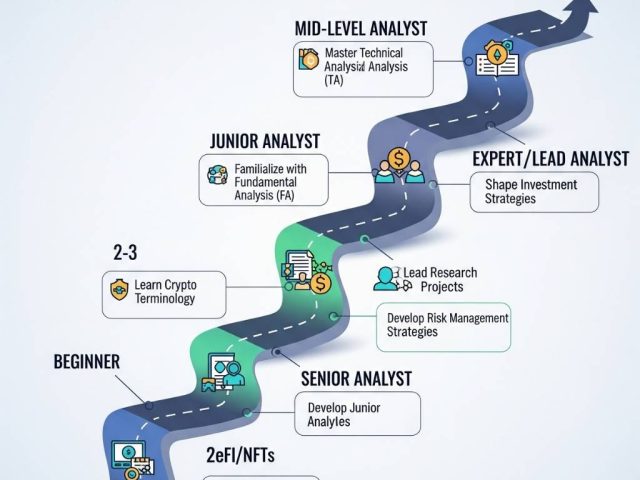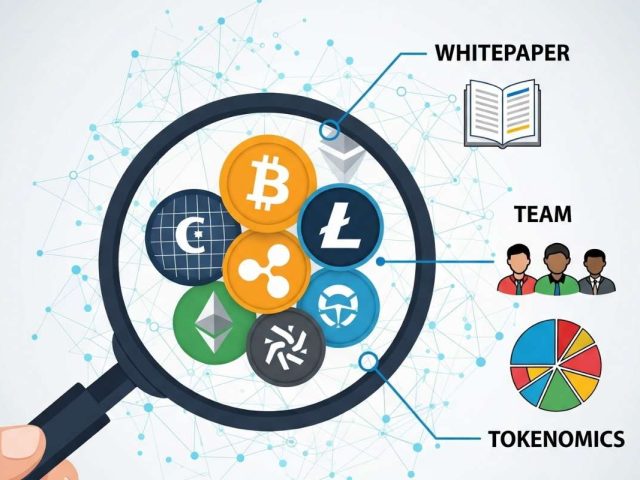The cryptocurrency market continues its rapid expansion, introducing a constant influx of new digital assets and blockchain projects. For investors navigating this dynamic landscape, the allure of potential high returns is often accompanied by significant risks. Beyond the initial hype and technological innovations, a crucial element often overlooked is the fundamental economic design of a cryptocurrency – its tokenomics. Understanding tokenomics is no longer optional; it has become a prerequisite for making informed investment decisions and discerning promising projects from potential pitfalls. This guide will delve deep into the world of tokenomics, equipping you with the knowledge to analyze the economic underpinnings of cryptocurrencies and ultimately enhance your investment strategy. We will also touch upon how these principles can be applied when evaluating platforms like Scentia.io.
What Exactly is Tokenomics?
At its core, tokenomics, a term blending “token” and “economics,” represents the study and analysis of the economic aspects of a cryptocurrency or blockchain project, with a specific focus on the design and distribution of its native digital tokens . Think of it as the financial blueprint of a crypto asset, dictating how the token functions within its ecosystem . This encompasses everything from how the tokens are created and distributed to their intended use and the mechanisms designed to influence their value . The economic aspects extend beyond just the token itself, considering how the system provides and distributes scarce resources, how it interacts with external economic processes, and how participants within the network are likely to behave . This field often has a practical focus, aiming to engineer economic systems within blockchain projects to possess specific, desired properties . While traditional economics deals with the broader production, distribution, and consumption of goods and services in any market, tokenomics specifically concentrates on the behavior and utility of tokens within the blockchain and crypto ecosystem . For anyone involved in or interested in cryptocurrencies, grasping these fundamental economic models is essential . A well-defined tokenomics structure is not just a theoretical exercise; it is the very foundation upon which the purpose and function of a token are built . By understanding the underlying economics of a project, investors can better gauge its potential for growth and profitability, as tokenomics significantly impacts the overall health and stability of a network . Therefore, for any investor looking to navigate the complexities of the cryptocurrency market, understanding tokenomics is not just beneficial—it’s non-negotiable .
The Anatomy of Tokenomics: Key Components to Scrutinize

To effectively analyze a cryptocurrency’s tokenomics, investors need to dissect its key components. These elements work in concert to shape the token’s value, utility, and long-term sustainability.
Token Supply: Unpacking Total, Circulating, and Maximum Supply
One of the most fundamental aspects of tokenomics is the token supply. This encompasses several key metrics that investors must understand .
The Maximum Supply represents the absolute limit of tokens that will ever exist for a particular cryptocurrency . This is a crucial concept because it introduces the element of scarcity. Similar to precious metals, a token with a limited maximum supply can potentially see increased demand and, consequently, an appreciation in value over time . Bitcoin, for instance, has a fixed maximum supply of 21 million coins . This predetermined scarcity is a key factor in its perception as “digital gold.” Conversely, some cryptocurrencies have an unlimited supply, meaning there is no cap on the total number of tokens that can be created . While this can provide flexibility in responding to network needs, it also carries the risk of inflation, where an overabundance of tokens can lead to a decrease in their individual value .
The Total Supply refers to the total number of tokens that have been created so far, including those currently in circulation, as well as any that are locked up or reserved for various purposes . This number provides a snapshot of the current state of the token’s existence.
Finally, the Circulating Supply is the portion of the total supply that is currently liquid and available for trading on the market . Investors need to pay close attention to the relationship between the circulating supply and the total supply. A significant difference, where a large portion of the total supply is yet to be released into circulation, can indicate potential future dilution of value as these locked or vested tokens become available . Understanding these different supply metrics is fundamental to assessing a token’s scarcity and its potential for price fluctuations.
Token Utility: Identifying Real-World Use Cases and Value Proposition
Beyond the numbers of supply, the Token Utility defines the purpose and function of the token within its respective ecosystem . A token with strong utility is more likely to experience sustained demand and long-term value appreciation. Here are some examples of valuable token utility:
- Access Rights: Tokens can grant holders access to specific services or features within a platform . For instance, the Basic Attention Token (BAT) allows advertisers to pay for ad space and user attention within the Brave browser ecosystem .
- Governance: Some tokens provide voting rights, enabling holders to participate in the decision-making processes that shape the future of the platform . MakerDAO’s MKR token is a prime example, allowing holders to vote on proposals related to the Maker protocol .
- Medium of Exchange: Tokens can function as a means of payment for goods and services within or even outside their native ecosystem . Bitcoin and Litecoin are examples of cryptocurrencies primarily designed for this purpose .
- Staking: Many blockchain networks utilize staking mechanisms where token holders can lock up their tokens to help secure the network and, in return, earn rewards in the form of additional tokens . Ethereum (ETH) and Cardano (ADA) are prominent examples of tokens used for staking .
- Collateral: In the decentralized finance (DeFi) space, tokens can be used as collateral to borrow other assets or mint stablecoins .
- Fee Reduction: Some cryptocurrency exchanges offer native tokens that can be used to pay for trading fees at a discounted rate . Binance’s BNB token is a well-known example of this utility .
Conversely, investors should be wary of tokens with weak or forced utility. This includes scenarios where a token’s use seems unnecessary, overlaps with other tokens in the same ecosystem, or is overly complicated, potentially hindering adoption . Genuine utility that addresses a real need or provides tangible value is a strong indicator of a token’s potential for long-term success .
Token Distribution: Analyzing Initial Allocation and Vesting Schedules
The way a cryptocurrency’s tokens are initially distributed and subsequently released plays a significant role in its tokenomics and market dynamics . Understanding the Token Distribution mechanism can provide insights into potential centralization risks and the long-term commitment of the project team and early investors. Common distribution methods include:
- Initial Coin Offerings (ICOs): A popular fundraising method where projects sell a portion of their tokens to early investors before the project’s launch .
- Security Token Offerings (STOs): Similar to ICOs but involve the issuance of tokens that represent ownership in an asset, often subject to stricter regulatory requirements .
- Initial Exchange Offerings (IEOs): Tokens are offered for sale directly on a cryptocurrency exchange .
- Airdrops: Free distribution of tokens to existing cryptocurrency holders, often used for marketing and community building .
- Mining and Staking Rewards: Tokens are distributed as rewards to participants who contribute to the network’s security and operation through mining or staking .
- Fair Launch: A distribution model that aims to give all participants an equal opportunity to acquire tokens, often without prior fundraising rounds . Bitcoin is a notable example of a fair launch token .
Transparency in how tokens are allocated among different stakeholders, including the team, advisors, early investors, and the community, is crucial for building trust . Investors should also pay close attention to Vesting Periods, which are schedules that dictate when and how locked tokens are released to team members and early investors . These periods are designed to incentivize long-term commitment and prevent large sell-offs that could negatively impact the token’s price. A skewed allocation where a significant portion of tokens is held by a small group of insiders without proper vesting can be a red flag, indicating potential risks of market manipulation . A fair and transparent distribution model with reasonable vesting schedules fosters confidence and encourages sustainable growth .
Monetary Policy: Examining Inflationary and Deflationary Mechanisms
The Monetary Policy of a cryptocurrency refers to the mechanisms governing the supply of the token over time . Unlike traditional fiat currencies controlled by central authorities, the monetary policy of a cryptocurrency is typically embedded within its source code or implemented through smart contracts . This policy can be broadly categorized into inflationary and deflationary models.
Inflationary Models involve the continuous issuance of new tokens over time . Ethereum, for example, has an inflationary supply, although its recent upgrades have introduced mechanisms that can lead to periods of deflation . While inflation can incentivize spending and network participation, excessive inflation can lead to a devaluation of the token over time .
Deflationary Models, on the other hand, are designed to decrease the total supply of tokens over time, creating scarcity and potentially driving up value . Bitcoin’s fixed supply makes it a deflationary asset in the long run . One common deflationary mechanism is Token Burning, where a certain number of tokens are intentionally and permanently removed from circulation, often by sending them to an inaccessible wallet address . Binance Coin (BNB) utilizes regular token burns to reduce its total supply . Token Buy-backs, where the project uses profits to purchase tokens from the open market and then burn or redistribute them, can also contribute to deflationary pressure . Additionally, Staking Rewards, while often involving the creation of new tokens, can also influence the circulating supply and overall monetary policy . The chosen monetary policy has a profound impact on a token’s long-term value proposition and its attractiveness to different types of investors.
Governance: Understanding the Role of Token Holders in Decision-Making
In many decentralized cryptocurrency projects, the token also plays a role in Governance, granting holders the right to participate in the decision-making processes that guide the platform’s future . This can involve voting on proposals for protocol upgrades, feature implementations, or the allocation of community funds. Governance models can range from centralized, where a core team holds most of the decision-making power, to decentralized, where token holders have a significant say . Community involvement through governance mechanisms is often seen as a positive sign, contributing to the long-term health and resilience of the project . Decentralized Autonomous Organizations (DAOs) represent a more advanced form of decentralized governance, where token holders collectively own and manage the project through voting on proposals encoded in smart contracts . Understanding the governance structure of a project is essential for investors as it indicates the level of decentralization and the potential for community-driven growth .
Why Tokenomics Matters: Its Impact on Investment Decisions
A thorough understanding of tokenomics is paramount for investors seeking to make informed decisions in the cryptocurrency market. It provides crucial insights into a project’s long-term viability, potential risks, and overall investment attractiveness.
Assessing Long-Term Viability and Sustainability
Well-designed tokenomics serves as the foundation for a cryptocurrency project’s long-term viability and sustainability . It plays a critical role in encouraging user adoption and retention by incentivizing desired behaviors within the ecosystem . A healthy tokenomic model can create a self-sustaining economy where the token’s value reflects the underlying economic activity and rewards contributors for their efforts . Projects with carefully crafted tokenomics are more likely to attract and retain users, foster a strong community, and ultimately achieve long-term success .
Identifying Potential Risks and Red Flags
Conversely, flawed tokenomics can expose investors to significant risks and serve as a red flag. Poorly designed economic models can lead to excessive inflation, which erodes the value of the token . Highly centralized token distribution can create opportunities for market manipulation and raise concerns about the project’s decentralization . Investors should also be wary of projects with a lack of clear use cases for their token, opaque token release schedules, or unrealistic promises of guaranteed returns, as these can be indicative of unsustainable or even fraudulent schemes . The absence of regular security audits is another significant red flag, as it suggests a lack of commitment to protecting the network and its token holders . Recognizing these potential pitfalls in a project’s tokenomics can help investors avoid scams and poorly designed tokens, safeguarding their investments .
Gauging Market Sentiment and Adoption Potential
Tokenomics also significantly influences market perception and a project’s potential for adoption . A well-structured token economy can attract investors and build trust within the community . Factors such as a clear value proposition, fair distribution, and mechanisms to incentivize participation can positively impact market sentiment . Conversely, poorly designed tokenomics can lead to negative market sentiment and hinder adoption . Monitoring community engagement and sentiment surrounding a project and its token can provide valuable insights into its overall health and adoption potential .
Navigating the Tokenomics Landscape: Factors to Consider Before Investing
Before investing in any cryptocurrency, a thorough analysis of its tokenomics is crucial. Here are some key factors to consider:
Deep Dive into the Whitepaper and Project Documentation
The project’s whitepaper and official documentation are the primary sources of information about its tokenomics and should be the starting point for any serious investor . Investors should carefully examine the outlined purpose and vision of the project, the technical details of its implementation, and, most importantly, the economic model governing its token . Pay close attention to the project’s roadmap, the allocation of team tokens, and the vesting schedules . A well-written and transparent whitepaper that clearly articulates the token’s role, distribution, and monetary policy is a positive sign .
Evaluating the Team’s Expertise and Transparency
While not directly related to tokenomics, the expertise and transparency of the project team are crucial factors to consider. Research the team members’ backgrounds and track records. A transparent team that actively communicates with the community about project developments and any changes in tokenomics is generally a more reliable investment .
Analyzing Community Engagement and Sentiment
Engage with the project’s community forums, social media channels, and other communication platforms to gauge the overall sentiment and understanding of the project . An active and informed community that discusses the project’s fundamentals rather than just price speculation is often a good indicator .
Scrutinizing Token Allocation and Distribution
Carefully analyze how the tokens are allocated among different stakeholders, including the team, advisors, early investors, and the community . Look for a balanced distribution that doesn’t heavily favor insiders and ensure that there are clear and reasonable vesting schedules in place .
Understanding the Token’s Utility and Demand Drivers
Thoroughly understand the token’s practical purpose within the project’s ecosystem and the genuine drivers of demand . Look for real-world use cases, partnerships, and integrations that validate the token’s utility and demonstrate its potential for adoption .
Assessing Security Measures and Audit Reports
Check if the project has undergone regular security audits conducted by reputable third-party firms . Understand the consensus mechanisms employed to secure the network, as robust security is paramount for protecting investors’ funds and maintaining trust .
Case Studies: Learning from Real-World Tokenomics
Examining the tokenomics of both successful and unsuccessful cryptocurrency projects can provide valuable lessons for investors.
Examples of Strong Tokenomics Models and Their Success Factors
- Bitcoin (BTC): Its fixed supply of 21 million creates inherent scarcity, a key driver of its value as a store of value . The decentralized issuance through mining and the predictable halving events further reinforce its deflationary nature .
- Ethereum (ETH): Its utility as the fuel (gas) for the vast Ethereum network and its decentralized applications (dApps) creates strong demand . The ongoing transition to Proof-of-Stake (PoS) and the implementation of EIP-1559, which burns a portion of transaction fees, are evolving its monetary policy towards a potentially deflationary model .
- Binance Coin (BNB): Its utility within the extensive Binance ecosystem, including discounts on trading fees and participation in token sales, drives consistent demand . The regular token burns implemented by Binance reduce the total supply, contributing to its value appreciation .
- MakerDAO (MKR & DAI): This project utilizes a dual-token model where DAI is a stablecoin pegged to the US dollar, and MKR is the governance token used to manage the DAI system . The distinct utility of each token within a well-defined ecosystem contributes to its success.
Examples of Flawed Tokenomics Models and Their Pitfalls
- Bitconnect (BCC): This notorious project promised unsustainably high returns through a lending program, a classic characteristic of a Ponzi scheme . The lack of transparency surrounding its operations and the centralized control of tokens were significant red flags .
- Terra/LUNA: The algorithmic stablecoin UST’s reliance on the LUNA token to maintain its peg proved to be a fatal flaw . When UST depegged, the hyperinflation of the LUNA supply led to a catastrophic collapse, highlighting the risks of poorly designed stablecoin mechanisms .
- Projects with Excessive Token Supply and No Utility: Many projects have launched with astronomically high total token supplies without any clear or compelling use cases. This often leads to significant dilution and makes it incredibly difficult for the token to accrue meaningful value .
Tokenomics and Scentia.io: An Investor’s Perspective
Scentia.io describes itself as a sophisticated analytical platform for the crypto industry, aiming to simplify blockchain projects by providing in-depth reviews . Its mission is to highlight well-hidden gems and potential pitfalls by combining institutional-grade research with specialized tools .
While the provided information doesn’t explicitly detail the tokenomics of Scentia.io’s native token, further investigation reveals some potential insights. A token named “SAINO” with the symbol “SIO” exists on the Ethereum blockchain . This token has a total supply of one billion, minted by the contract owner . Notably, no contract security audit has been submitted for this token on Etherscan . Additionally, there is evidence suggesting that the SAINO token has gained some recent traction within the crypto community, trending on platforms like CoinGecko . However, it’s important to note that searches for “Scentia” also yield results for unrelated businesses in areas like home fragrance and event management .
Applying the principles of tokenomics analysis, a potential investor in Scentia.io’s SAINO token would need to conduct further research to understand its specific utility within the Scentia.io platform. What benefits does holding SAINO provide to users? Is it used to access premium features, for governance, or for other purposes? Understanding the token’s intended use is crucial for assessing its potential demand. Furthermore, information regarding the token’s distribution model is essential. How was the initial supply allocated? Are there vesting schedules for the team or early investors? Details about any token burning mechanisms or staking rewards would also be valuable in understanding the token’s potential for value appreciation. Without a comprehensive understanding of these key tokenomic factors, it is challenging to make an informed investment decision regarding Scentia.io’s native token. Potential investors should prioritize projects that offer clear, transparent, and well-documented tokenomics to better assess their long-term investment potential.
Crafting Your Investment Strategy with Tokenomics Insights
Understanding tokenomics empowers investors to craft more informed and strategic approaches to cryptocurrency investing. By thoroughly analyzing the economic design of a project, investors can identify those with sustainable models that are more likely to succeed in the long run. Conversely, a keen understanding of tokenomics helps in recognizing red flags and avoiding projects with potentially flawed or even fraudulent economic structures. This fundamental analysis, focusing on the intrinsic value and economic mechanisms of a cryptocurrency, complements technical analysis and market sentiment analysis, leading to more well-rounded and confident investment decisions.
Conclusion: Empowering Your Crypto Investments Through Tokenomics Knowledge
In the ever-evolving world of cryptocurrency, understanding tokenomics is no longer a niche skill but a fundamental requirement for successful investing. By dissecting the key components of a token’s economic design – its supply, utility, distribution, monetary policy, and governance – investors can move beyond speculation and make informed decisions based on fundamental value. The case studies of both successful and failed projects underscore the profound impact of tokenomics on a cryptocurrency’s long-term viability. As you navigate the vast and often complex landscape of digital assets, remember that a thorough understanding of tokenomics is your compass, guiding you towards smarter and more profitable investment choices. Conduct your due diligence, scrutinize the economic blueprints, and empower yourself with the knowledge to discern the true potential of cryptocurrency investments.





